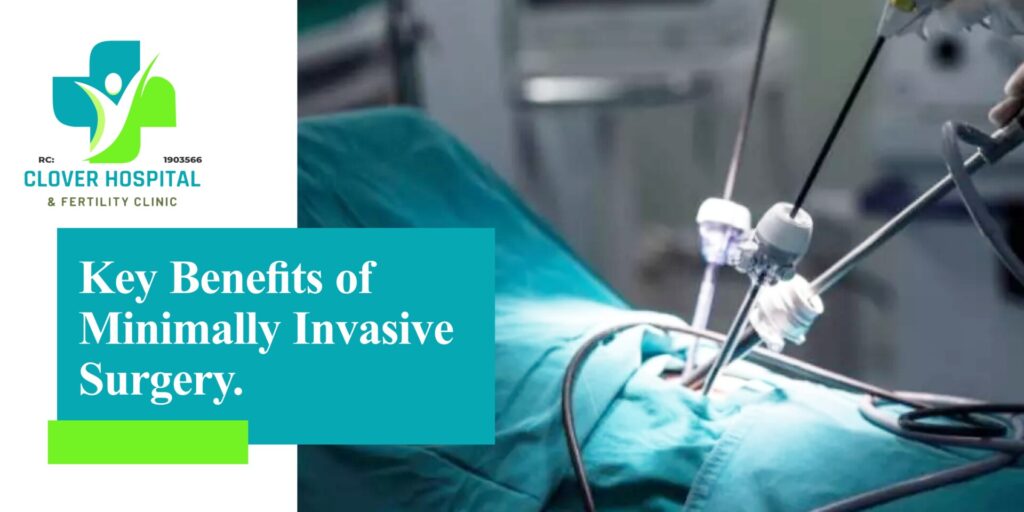Blog
Home / Key Benefits of minimally Invasive Surgery

Key Benefits of Minimally Invasive Surgery
- Reduced Pain and Discomfort: Because minimally invasive procedures only require small incisions, patients experience significantly less postoperative pain and discomfort compared to traditional open surgery. This leads to a more comfortable recovery process.
- Small incisions Instead of a large incision, the surgeon makes just a few small cuts, typically less than an inch long. This minimises tissue damage and scarring.
- Camera Guidance: The surgeon inserts a tiny camera called an endoscope through one of the incisions. This allows them to see the surgical area on a monitor and guide the surgical tools precisely.
- Shorter hospital stays Many patients undergoing minimally invasive surgery are able to be discharged from the hospital on the same day or within a day or two, much faster than the multi-day hospital stays common with open procedures.
- Faster Recovery: Patients often experience less pain, less blood loss, and a quicker return to normal activities after minimally invasive surgery compared to open procedures.
- Advanced Techniques: Minimally invasive surgeries use specialised tools and techniques to access the surgical site through small incisions rather than large open incisions.
- Improved Outcomes: This approach can lead to reduced pain, scarring, and recovery time for patients compared to traditional open surgery.
- Reduced Risks of Complications: Smaller incisions mean less tissue trauma, blood loss, and the risk of infection or complications.
- Better cosmetic outcomes: minimally invasive techniques result in smaller, less noticeable scars, providing a better cosmetic outcome for the patient.
Risks and Disadvantages of Minimally Invasive Surgery
- Potential Complications: While minimally invasive procedures generally have a lower risk of complications compared to open surgery, there are still potential risks involved. These can include complications from anaesthesia, such as adverse reactions, as well as an increased risk of infection due to the small incisions. In rare cases, there is also a risk of internal organ damage or bleeding during the procedure if the surgeon encounters unexpected anatomical challenges.
- Limited Applicability: Not all surgical procedures can be performed using minimally invasive techniques. The surgeon must have the appropriate training and specialised equipment to carry out these types of operations successfully. Certain complex or high-risk surgeries may still require the larger incisions of traditional open surgery in order for the surgeon to have full visibility and control over the treatment area.
- Patient Exclusions: Some patients may not be suitable candidates due to health or anatomical reasons.
Newsletter
Sign up for latest information and events
Book Your Appointment Now
Comprehensive care with expert doctors, advanced technology, and a wide range of specialised services, from gynaecology to emergency response—your health is our priority.
Book Appointment
Contact Us Now
